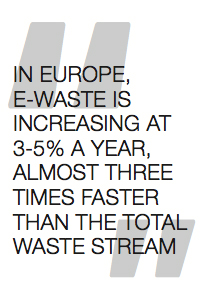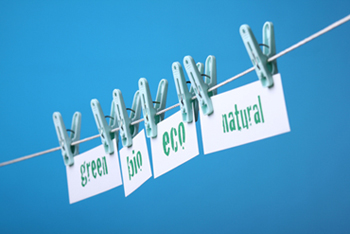Two Sides is doing a great job in challenging the assumption that digital is more environmentally friendly than paper-based print. But can you do more to help spread the word?
In February, The Guardian newspaper ran an article ‘Is digital really greener than paper?’ in response to the print industry’s challenge for the world at large to rethink this wide held belief. As the piece acknowledged: “We've all received statements from our banks, telecommunication and utilities companies with a simple message at the bottom urging us to ‘Go paperless, save trees’.” The implicit message is that print is damaging to the planet.
Two Sides, the not for profit organisation formed in 2008 with a mission to dispel such a misconceptions via the provision of verifiable information on why print and paper is a sustainable medium, has now convinced a number of companies to get rid of their ‘Go paperless...’ messages, and you need only go to the ‘news’ section of the Two Sides website to see how much noise it is managing to make on the topic. But could you help progress the change in how people view print’s eco credentials?
Two Sides UK has put together seven new ‘Quick Fact Sheets’ that make it easy to understand how and why print and paper have a good environmental story to tell. The organisation is happy for you to use the resources with customers etc. to better inform them of the true situation. Here’s an overview of each fact sheet, all of which can be downloaded in their entirety from the Two Sides website as PDFs.
Fact sheet 1
The myth: Making paper always destroys forests.
The fact: Paper production supports sustainable forest management.
Information includes:
- European Forests have grown by over 30% since 1950 and are increasing in size by an area four times the size of London every year.
- Paper only directly takes 11% of the world’s wood harvest.
 Fact sheet 2
Fact sheet 2
The myth: Planted forests are bad for the environment.
The fact: Well managed planted forests are essential to meet demand for forest goods.
Information includes:
- The WWF Living Forests Model projects that around 250milion hectares of new planted forests for all end uses might need to be established by 2050 due to population and GDP growth. 11 million of those might be needed in Europe.
- Initiatives such as the FAO Guidelines for Responsible Forest Management of Planted Forests and forest certification can help maintain ecosystems and biodiversity, protect high conservation values, involve multiple stakeholders and aid economic development.
Fact sheet 3
The myth: Paper is bad for the environment.
The fact: Paper is one of the few truly sustainable products.
Information includes:
- There are some 30 certification schemes ensuring paper is from a sustainable forest source.
- In 2010, 61.6% of the European paper industry's virgin wood fibre was certified, 5% more than in 2008.
Fact sheet 4
The myth: Making paper uses a lot of non renewable energy and has a high carbon footprint.
The fact: Most energy used is renewable. Carbon intensity is surprisingly low.
Information includes:
- With 1.1% of the world's greenhouse gas emissions, the value chain of pulp, paper and print is one of the lowest industrial emitters.
- On average it takes 500 kilowatt hours (Kwh) to produce 200kg of paper; the average consumption per head in Europe. This is comparable to driving an average family car 600 miles.
Fact sheet 5
The myth: Only recycled paper should be used.
The fact: Paper made from sustainable forests is needed to start the paper cycle.
Information includes:
- Without new fibres, from new trees, the paper cycle cannot begin. Recycled fibres degrade after several uses.
- It is estimated that up to 48% of new wood fibre is currently needed to keep the global fibre cycle going.
Fact sheet 6
The myth: Print and paper is wasteful.
The fact: Paper is one of the most recycled products in the world.
Information includes:
- The European recycling rates for paper reached 72% in 2012. In Europe two tonnes of paper are recycled every second.
- The number of cycles a paper fibre goes through in the loop reached an average of 3.4 in Europe compared to a global average of 2.4.
Fact sheet 7
The myth: Electronic communication is more environmentally friendly than print and paper
The fact: Not necessarily. E-media also has environmental impacts
Information includes:
- With a reading time of 30 minutes per day the environmental impact of a Web-based newspaper is, in general, in the same range as a printed newspaper's environmental impact.
- In Europe, e-waste is increasing at 3-5% a year, almost three times faster than the total waste stream.
{jathumbnail off}


